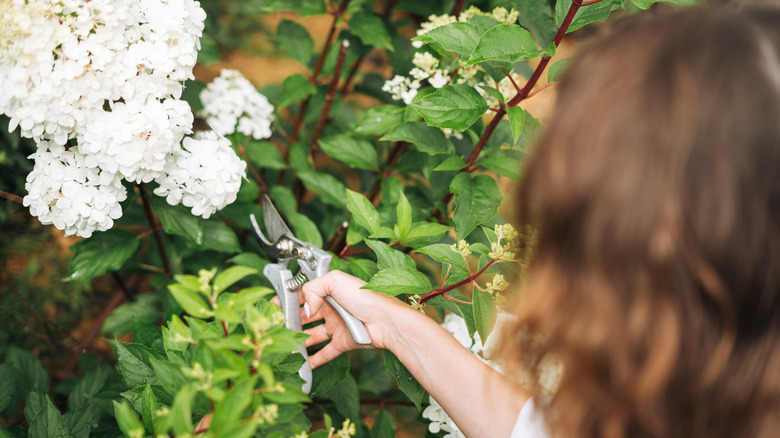Is It Possible To Deadhead Your Flowers Too Much?
Deadheading is either a chore or wildly satisfying, depending on who you ask. And if you ask me, nothing brings more pleasure than the snip, twist, pluck, and repeat rhythm of this activity that works wonders to keep your blooms looking fresh and bright. But if you get a similar joy from removing the old flowers, we have some potentially bad news: you could be overdoing it.
So what is deadheading in the garden, anyway? Simply, it's the act of taking off flowers that have passed their sell-by date so that the plant puts its energy into producing more blooms and not just setting seed. And it works really well for many annuals like petunias and zinnias, but there isn't a one-size-fits-all approach to deadheading. In fact, you could accidentally take it too far by removing too much healthy plant, cutting too far down the stem, or cutting with dirty scissors, all of which will only weaken the plant over time. The stress of too much deadheading could slow the growth of the plant.
And there's also the fact that not every plant even needs deadheading. In fact, many flowers like impatiens and aster will do better being left alone after their blooms begin to droop. Plus, once the seeds start to appear, so will the birds, contributing to the natural order of things in your garden. So if you're questioning where to start, check out this list of plants you should always deadhead to see which really do need the extra attention.
It turns out, not every flower needs to be deadheaded
When it comes to deadheading, it really is about striking that balance between over-pruning and essential maintenance. For example, while deadheading roses can certainly lead to more blooms (and not deadheading is one of the gardening mistakes to avoid with your roses), there are instances where this isn't the case. In fact, some varieties of rose only flower once and so cutting them back could mean no rosehips for the birds and no new blooms to enjoy — a situation in which everyone loses. And some plants can actually self-clean, such as begonias and coneflowers, which means they will naturally drop and get rid of their dead blooms themselves. Doing it for them then just becomes time you could spend doing something more productive in your yard.
If you have plants and flowers that respond well to a little trim, just be cautious. Going after them too often will probably cause more harm than good. Plants like lavender only need to be pruned once a year, for example. Know how to keep it simple when it comes to deadheading — always observe your plants and only get hacking when things look especially spent or scraggly. Cutting just the spent flowers and leaving foliage behind can help the plant recover faster. Otherwise, just let the plants do their own thing. Nature knows what it's doing.

